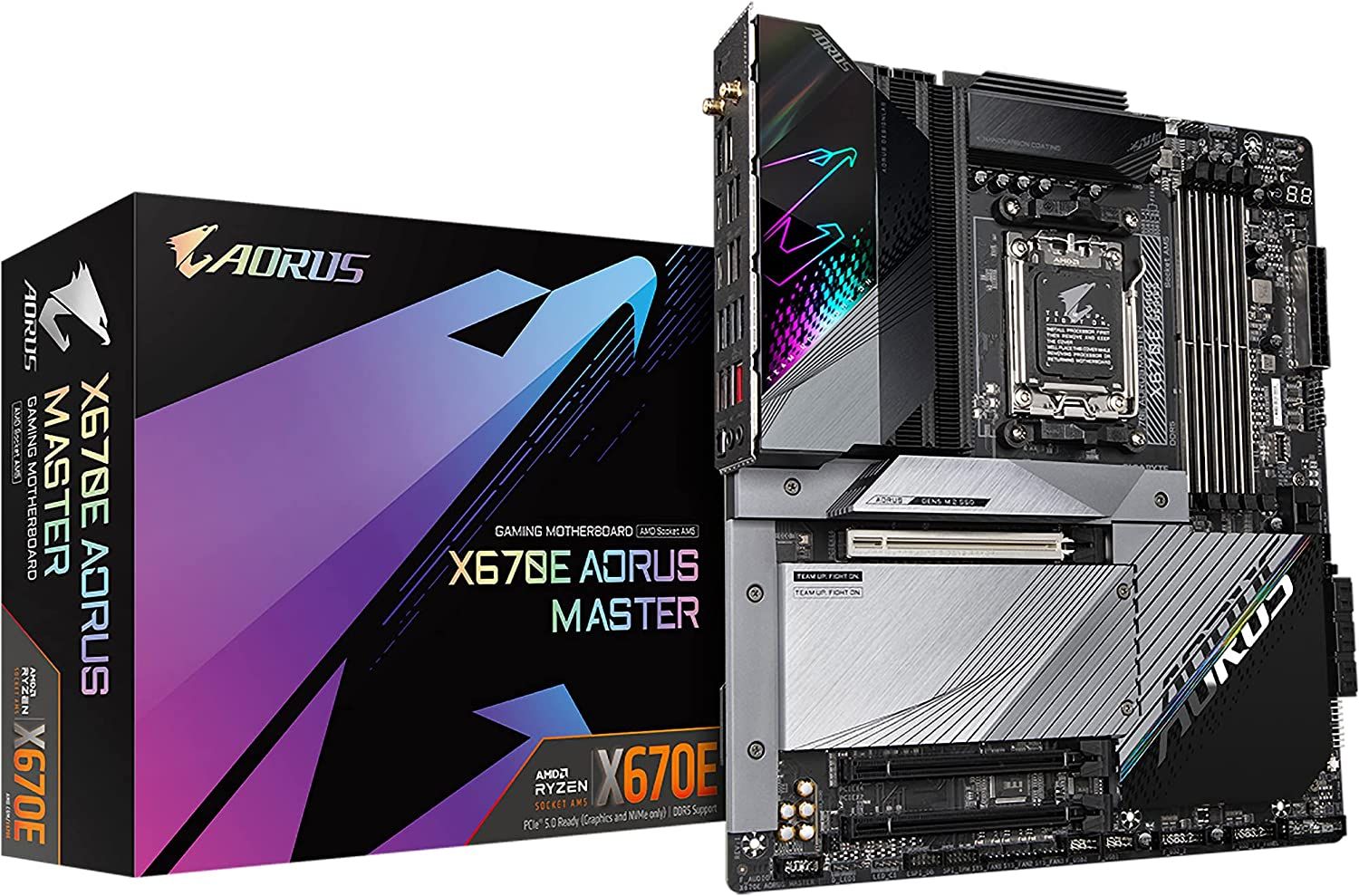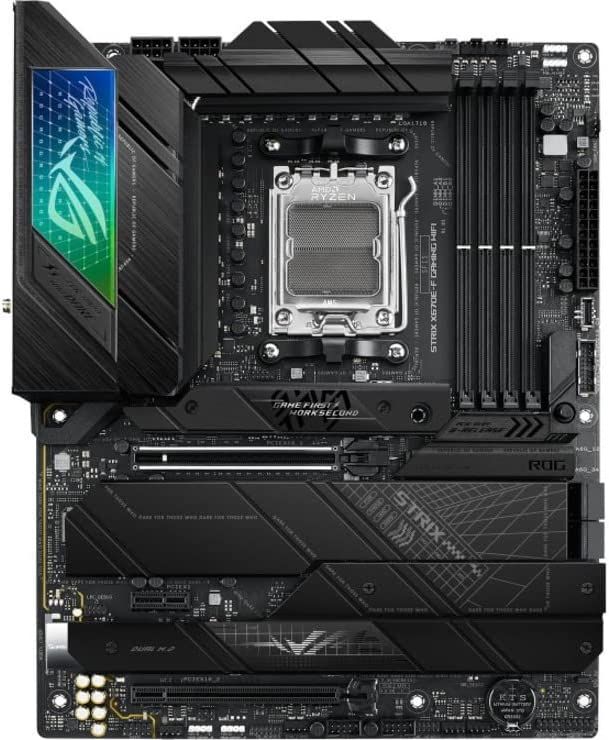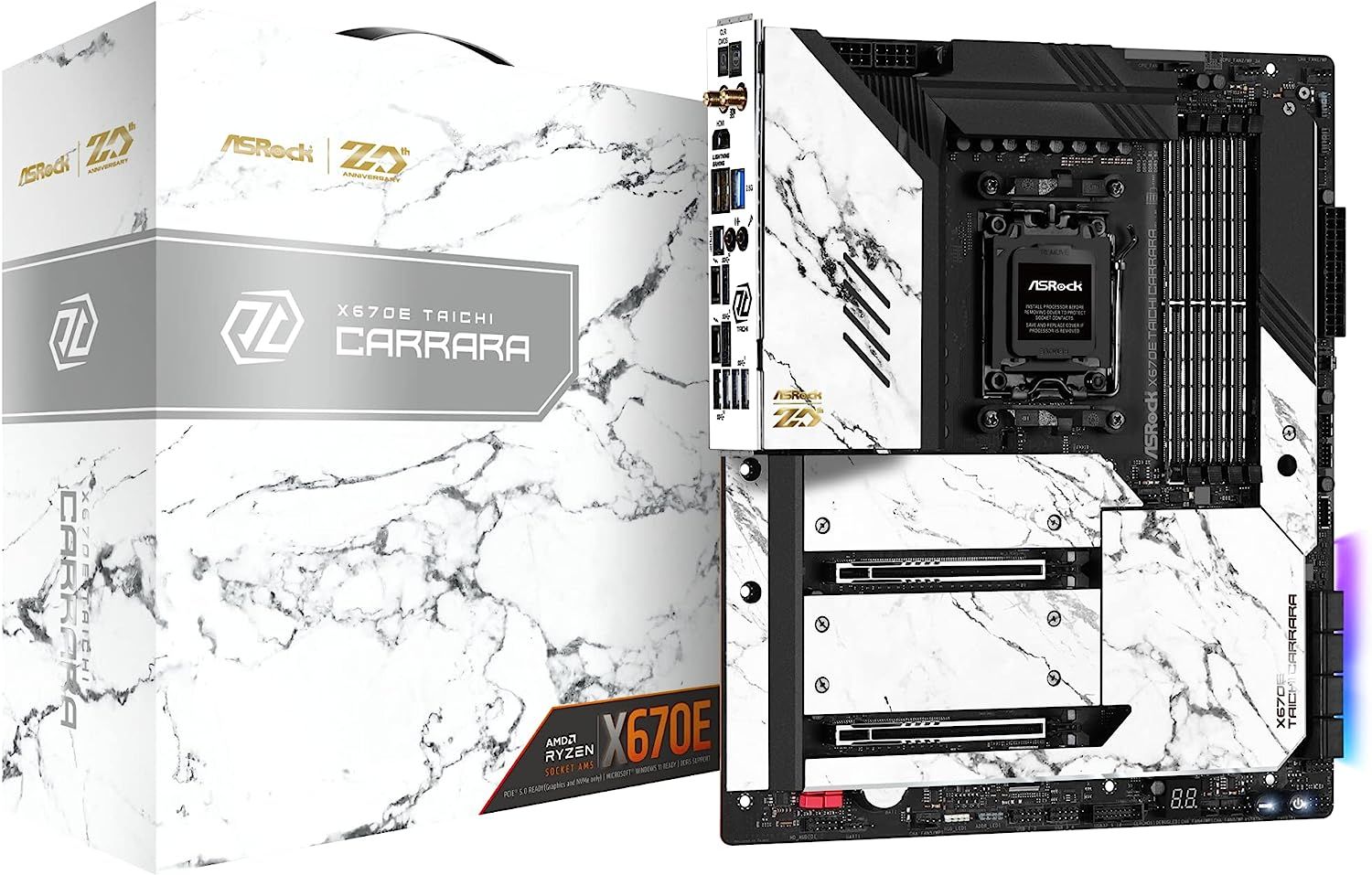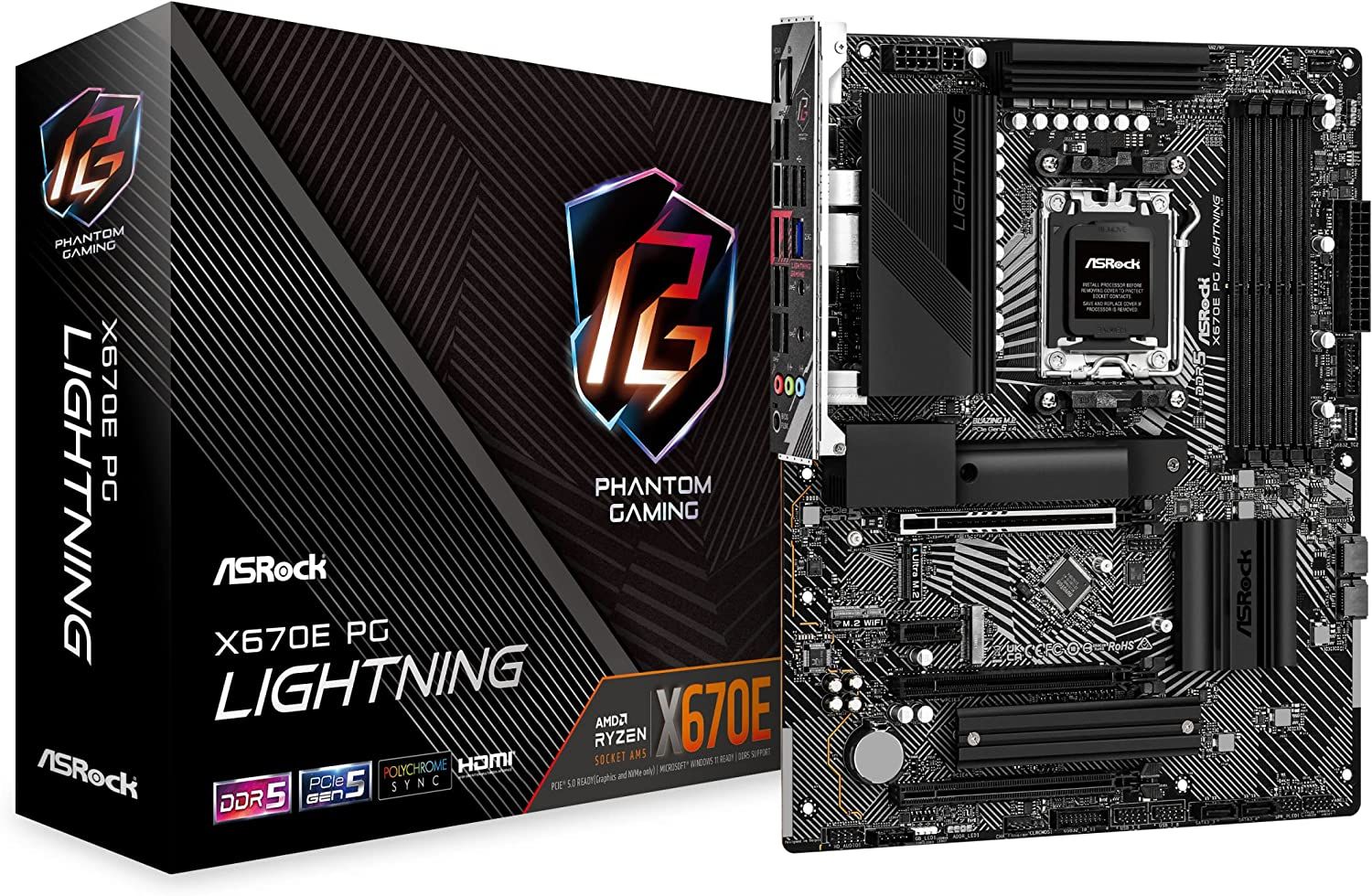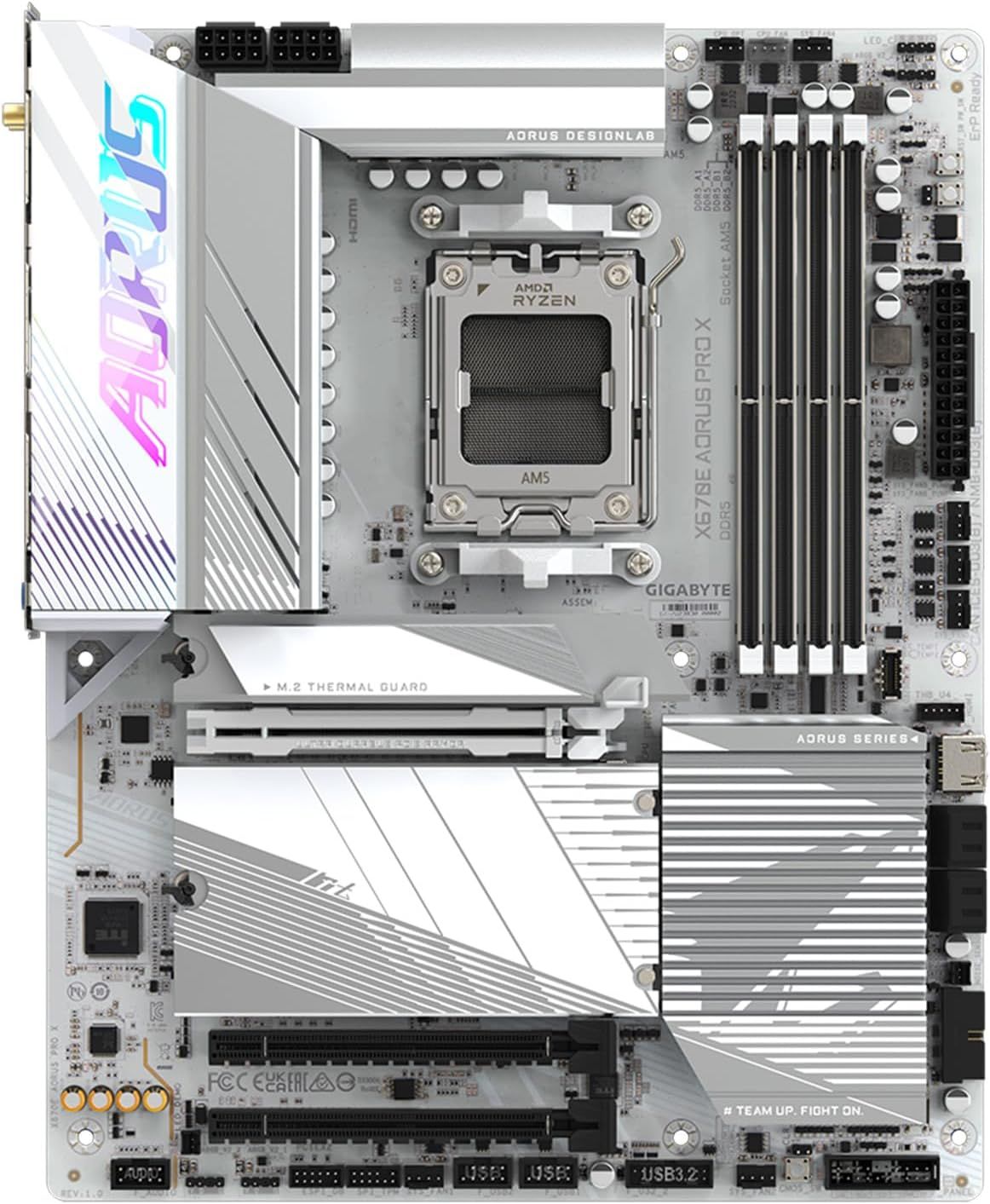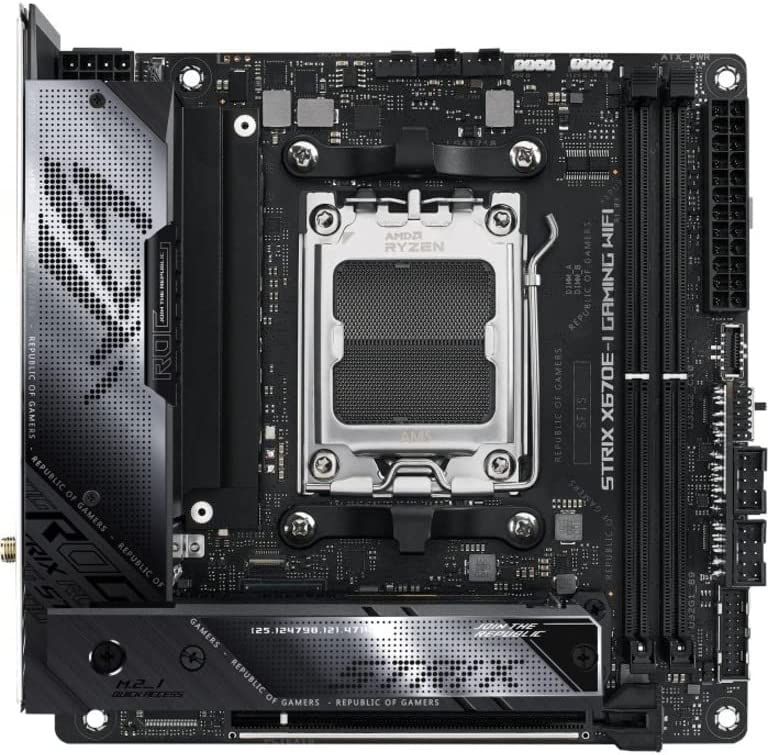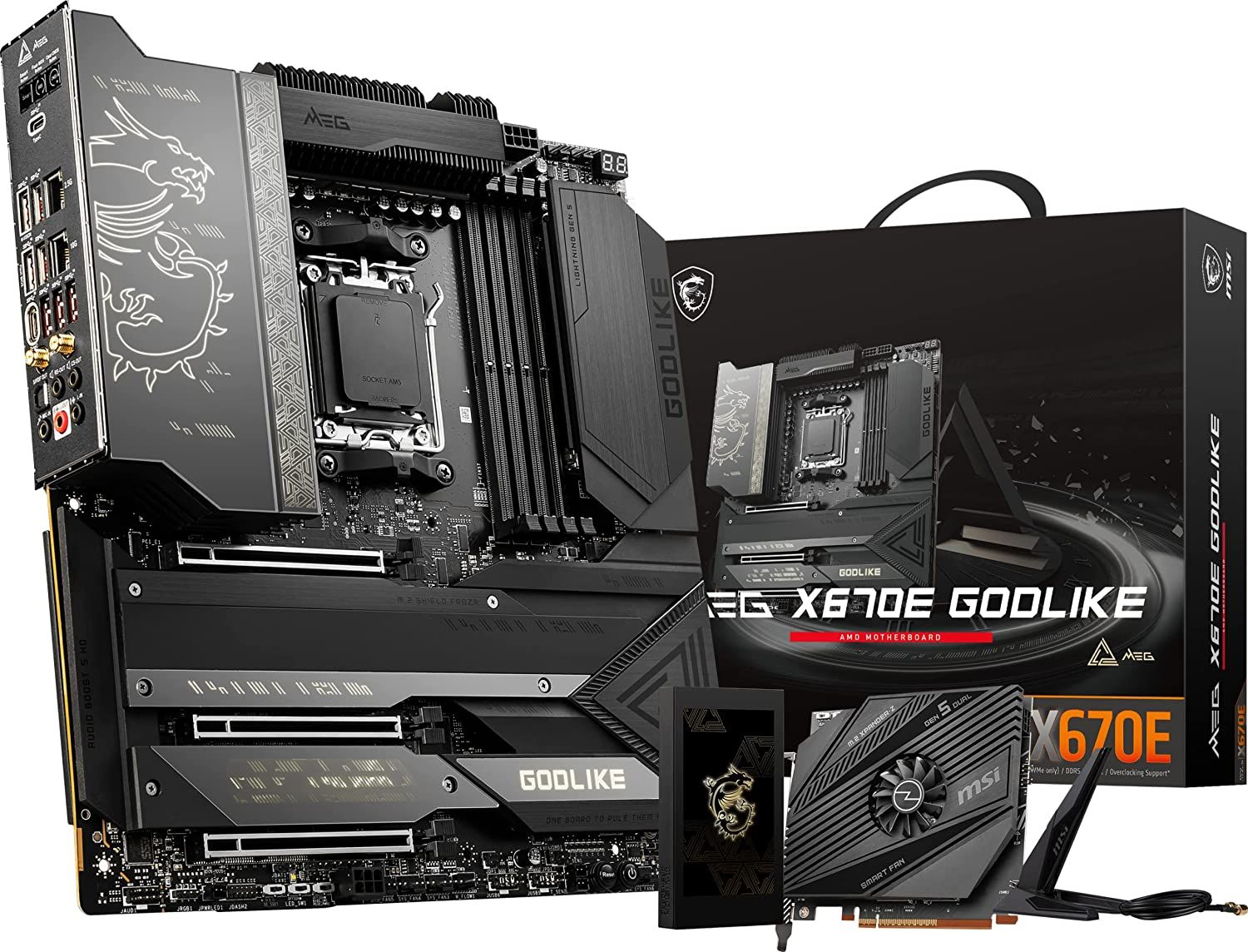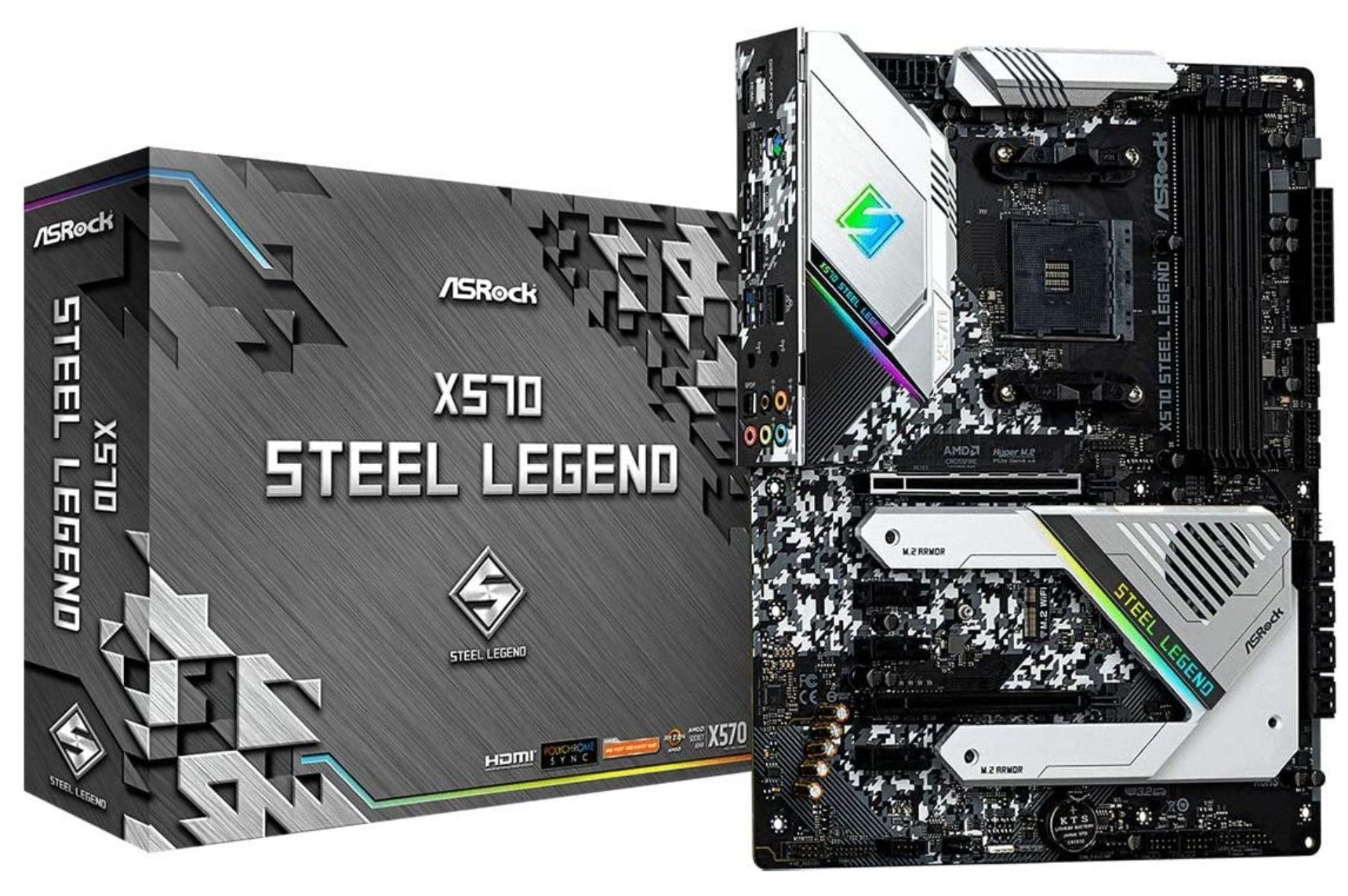AMD's gaming lead continues well into 2024 as it solidifies itself as a more efficient alternative to Intel's power-hungry CPUs across the board thanks to its Zen 4 cores. Its Ryzen 7 7800X3D CPU continues to hold the gaming performance crown from Intel, and decisively so. It delivers on the promise the Ryzen 7000 series made when it launched, before a resurgent Raptor Lake-based Intel 13th (and later, 14th) generation processor lineup overshadowed it.
As users account for AMD's gaming-centric Ryzen 7000X3D processor lineup, which currently dominates benchmarks for both gaming and efficiency, they also need to look at motherboards to partner with AMD's latest and greatest gaming-centric CPUs. For users looking for a better bargain, both AMD's older 7000 series CPUs and the X3D lineup are regularly on sale, making them some of the best choices they can go for when it comes to both gaming and productivity.

The Best Budget CPUs for Gaming for 2024
Here are some of the best gaming CPUs that can be bought without breaking the bank.
Picking The Best AMD Gaming Motherboards
While AMD's AM5 socket-based platforms continue to improve at various price points, they offer considerably better value in the mid-range and entry-level segments thanks to the B650 and A620 chipsets. That's even as it ushers in PCI-E 5.0 and DDR5 memory as standards at the high-end X670 chipset tier, with the latter being a mainstay even in budget-centric motherboards (AMD has no DDR4-based AM5 options currently in play or planned in the future).
A gaming motherboard, however, should be judged by its performance in multiple game-centric metrics, including, but not limited to:
- Overclocking Performance: Motherboards with better power delivery tend to allow for better overclocking and pushing past spec thanks to stable and readily available power to support AMD's Precision Boost Overdrive (PBO) overclocking solution as well as tweaked manual overclocking needs.
- RAM Compatibility: While AMD's Ryzen 7000 series is stated to work with DDR5 memory clocked at 4800 MHz or higher, better memory modules can overclock to well north of 6000 MHz and do offer performance gains for specific tasks including gaming for some power users. This is in line with AMD's recommendations that making 6000 MHz or higher an appealing option. For users employing AMD's Ryzen 8000 series APUs, higher memory clocks nearly always help with performance gains to match.
- Support For Upcoming Processors: Higher-end motherboards and those with larger BIOS chips should have better and more readily available support for newer CPUs if AMD's socket AM4 is anything to go by. This means users with the better chipsets X670 and X670E might see better future support for newer AM5-based CPUs, much like with the X370 and X470 motherboards.
- Timely BIOS Updates: While new BIOS updates add features and iron out bugs, they also bring direct optimizations from AMD in the form of AMD Generic Encapsulated Software Architecture (AGESA). Not only does this cover security updates and performance enhancements, but it also tends to offer better stability across the board, making a more recent gaming motherboard a more appealing choice in 2024.
- Storage & Networking Options: A lot of motherboards skip or offer crippled storage and networking options in 2024. Gamers should not need to look sideways to eliminate bandwidth issues, connectivity, or latency problems or have to swap out entire storage mediums when upgrading due to the lack of storage connectivity in play (M2 & SATA alike). Getting a motherboard that is well-endowed in these departments is often an investment that pays off manifold, both in upgrade costs and convenience down the line.
All our recommendations are specific to AM5 socket motherboards. That means only AMD Ryzen 7000 series, 8000G series, and future AMD processors are compatible with these motherboards.
While AMD's X670E motherboards are generally pricier than Intel's premium end, they are expected to remain relevant far longer than Intel's current crop of 600 and 700-series motherboards. That isn't exactly an excuse for their abysmal pricing, but it should make parting with hard-earned cash easier, knowing the motherboard will possibly remain relevant long past current-generation CPUs, making it easier to invest in higher-end options.
To run AMD's highest-end offerings, as well as any of the Ryzen 7000 or 7000X3D lineups, a motherboard that supports the AM5 socket and sports the AMD 600 series chipsets (A620/B650/B650E/X670/X670E) is required. But with so many options to choose from, one can easily get confused about what to buy, given the plethora of options that often are not well distinguished from each other. This makes choosing the right motherboard for the right job a tad harder. Thankfully, the team at Game ZXC has decided to lend a hand by highlighting some of the best motherboards for gaming.
The Best AMD-Centric Motherboards For Gaming In 2024
The GIGABYTE X670E AORUS Master Motherboard is a complete, albeit pricey, gaming-centric motherboard. It offers a massive amount of I/O options, sporting dual PCI-E Gen 5 SSD support in addition to PCI-E 5.0 support on the x16 slot, making it a future-proof offering, unlike its cheaper B650/A620 competitors. While it holds its own exceedingly well versus some of the top-tier models of its competition, as more competitive mid-range offerings from other vendors begin to hit mainstream lineups, the $500 price tag the Aorus Master commands does seem to be stretching its value proposition. Some of its competitors offer similar features in sub-$300 to $400 motherboards.
With solid BIOS support from Gigabyte (ten major updates since launch at the time of writing) and a connector-dense motherboard, there isn't much that the Aorus Master misses. Given the abysmally steep prices of some of the higher-end X670E-based motherboards from its competition, one might even be willing to let Gigabyte's excellent offering slide in the pricing department without saying too much for an excellent motherboard that does tick all the boxes for an AMD-based motherboard. That's even as it trades at a 10% discount over MSRP at multiple retailers.
The ASUS ROG Strix X670E-F Gaming Wi-Fi motherboard is in just the right place at the right time for most gamers. It isn't the crazy overkill that the Hero and the Crosshair Extreme are for most users, while it delivers substantial value compared to most of the motherboards that directly compete with it, often at sub $500 price points. It is feature-rich and comes with support for PCI-E 5.0 on both the x16 slot and the M2 slot out of the box, making it a true long-term investment while the AM5 socket remains in play.
ASUS's ROG Strix X670E-based lineup has generally been pricier than the competition, which often has contenders at the $250-300 mark. This makes it a slightly pricier X670E option compared to most of its direct competition, but also one that has reliable power delivery, PCI-E 5.0 support for both, an NVMe SSD, and a GPU slot, as well as plenty of I/O on offer.
The ASUS ROG Strix X670E-F Gaming Wi-Fi has seen multiple price cuts that make it a far more affordable option in 2024 than it was at launch. For users looking for a robust, cost-effective option that also houses an X670E chipset, this might be the best bet from ASUS for them as well-balanced offering for gamers.
The ASRock X670E Taichi Carrara is a statement in white from ASRock to match its black-themed X670E Taichi motherboard that also trades at a similar price, but comes without the limited edition fan its sibling offers. The Taichi Carrara also throws in a free 120mm fan to compensate and Carrara marble as part of its design. This makes for a much more premium appearance than some of its alternatives.
However, the ASRock X670E Taichi Carrara is more than just a good-looking motherboard. It houses one of the best power delivery mechanisms in play for any AM5-based motherboard coupled with excellent memory overclocking credentials. With Wi-Fi 6E, Bluetooth 5.3 support, and 2.5 GB ethernet support, plus Killer networking controllers, the X670E allows for excellent, low-latency gaming, ultimately offering some of the best networking money can buy on an X670E motherboard.
It also offers quad M2 slots, including one with PCI-E 5.0 support and dual PCI-E 5.0 x16 slots, making it a future-proof purchase for a next-generation GPU upgrade down the line. All in all, while the Taichi Carrara might compare unfavorably in terms of value versus its cheaper edition in black, it boils down to whether users are willing to part with that $100 for aesthetics and a Carrara-themed fan. For many, the answer might be yes for the aesthetic appeal alone.
The ASRock X670E PG Lightning Gaming Motherboard is an excellent mid-range X670E-based motherboard that allows users to game and perform productivity-related work with ease. That's thanks to the highest-end AMD chipset coupled with excellent power delivery.
It does sacrifice its Wi-Fi capabilities to manage cost, but in return, it does offer significant amounts of I/O options that are normally found on higher-end motherboards. As gamers, most users want low-latency gaming. The capable 2.5G Ethernet port should take care of most gamers' needs, even if the option for wireless connectivity would be ideal.
The ASRock X670E PG Lightning Gaming Motherboard is a capable performer that delivers on its promise. It has a few quirks that can be remedied at a small additional cost, such as adding a capable Wi-Fi adapter should the need arise.
The ASRock X670E PG Lightning Gaming Motherboard remains one of the most cost-effective ways to get an X670E chipset-based AM5 motherboard. Despite no changes in pricing since Game ZXC last looked, it seems to be a safe bet to make if gaming on a budget.
For gamers looking for a fully functional X670E motherboard on a budget that still delivers looks that can rival those of the Taichi above, Gigabyte has them covered with the X670E Aorus Pro X. It comes in a silver-white theme and offers plenty of I/O under the hood. Additionally, it provides dual PCI-E 5.0 support for M2 SSDs, as well as 12 USB ports at the rear.
With an impressive 5-year warranty in tow and Wi-Fi 7 support built-in, the Gigabyte X670E Aorus Pro X is built to last well beyond most, if not all, of its peers, as it packs an excellent power delivery mechanism under the hood. It does, however, get some degree of flack, primarily due to some QC issues that users seem to experience. These issues involve drivers on older versions of Windows, though periodic BIOS updates from Gigabyte (5 to date) seem to be resolving most of the software end of things, even as the longer warranty weighs heavily in the motherboard's favor in 2024.
The ASUS ROG STRIX X670E-I GAMING Wi-Fi combines a powerful X670E-based motherboard with the compactness that the M-ITX spec dictates. It remains a credible performer that has multiple overclocking-friendly features in tow as it pushes the boundaries of what is possible from a small form factor PC when paired with processors like the AMD Ryzen 9 7950X3D or 7950X while throwing in dual USB 4.0 ports into the mix for power users.
It does suffer somewhat from the lack of space, as it reduces its DDR5 RAM slots to two and also offers only two M2 slots onboard. It does attempt to compensate for the limited I/O on board by offering more control via the ASUS ROG Strix Hive and the Asus ROG FPS-II card that extend more headers and ports using a vertically mounted approach to remain within M-ITX specifications.
With limited alternatives in the market for an ITX-based AM5 motherboard, the ASUS ROG STRIX X670E-I GAMING Wi-Fi motherboard remains the best choice for many users looking to get a smaller form factor without sacrificing performance or PCI-E lanes on their high-end PC. As a result, however, prices have moved sideways with both major retailers we track for this particular motherboard, making it an expensive affair to go ITX with an X670E chipset, especially if gamers want to go the ASUS ROG Strix route.

The Best Motherboards For AMD Ryzen 9 7950X3D CPUs
The AMD Ryzen 9 7950X3D is the new king of the hill for gaming CPUs, but what is the best motherboard to pair it with as part of an upgrade?
The MSI MEG X670E GODLIKE Motherboard is an amalgamation of everything premium users can get from an MSI motherboard condensed into one massive E-ATX-based product offering. It should have users covered in terms of IO, networking, and overclocking needs for years to come for the AM5 platform.
The MEG X670E GODLIKE is the definition of overkill when it comes to hardware, and it comes with a price to match. It has the slightly undesirable crown of the most expensive AM5-based motherboard to date. This is partially due to the extra goodies, such as the touchscreen 4.5-inch M-Vision dashboard and the PCI-E based M2 XPANDER-Z dual slot M2 adapter, that enables it to support a total of six PCI-Express-based NVME SSDs.
However, the lack of USB 4.0 ports that its rival ASUS sports in its high-end offerings does put a bit of a damper on MSI's offerings in terms of future-proofing. Otherwise, the MEG is a motherboard that pushes limits in all conceivable ways on the X670E platform while sporting an AM5 socket that we expect to be relevant for years to come.
The MSI MEG X670E GODLIKE Motherboard has seen no major price movements, trading at $1200 or higher at multiple retailers. It currently looks to take up the space ceded by the ASUS ROG Crosshair X670E Extreme as a great, overclocking-friendly premium motherboard alternative. It remains one of the priciest X670E-based investments buyers can make for gaming, productivity, or overclocking needs, but it now seems to be more viable simply because of higher prices in play for some of its direct competitors.
The ASRock X570 Steel Legend is one of the most well-priced and well-balanced X570-based AMD motherboards that offer the aging AM4 socket to gamers looking for a replacement for their older CPU or a new Ryzen 7 5700X3D CPU that continues to show that AMD's last generation offerings pack significant muscle, even in 2024.
With dual M2 slots for storage in addition to one for Wi-Fi onboard and as many as 10 SATA ports, the ASRock X570 Steel Legend comes well-endowed with I/O options even as it offers 8 ports at the rear, 2 of which are Type-C. Users might not be thrilled to know they will still need to hunt for a Wi-Fi adapter to get wireless connectivity, though ASRock's cutout and strategically placed M2 key make things easier.
With a price point of just under $150 at Amazon at the time of writing, and considering the AM4 socket's lack of new CPU upgrades, the ASRock X570 Steel Legend seems to be an excellent, value-centric choice for gamers looking to stay on the older platform for a while before moving to DDR5 RAM and newer Zen 4-based CPUs and chipsets down the line.
What's Next After A Motherboard Purchase?
Already purchased a motherboard or are looking to pair it off with a capable processor from the AMD Ryzen 7000 series? Check out Game ZXC's guide on the latest and greatest AMD Ryzen 9 7950X3D compared to the Ryzen 9 7950X, and if it is worth shelling out extra for the former. Gamers might also want to consider Game ZXC's recently updated guide to purchasing memory/RAM for a DDR5-based AMD PC, as well as a GPU to pair with it to bolster gaming/productivity needs.
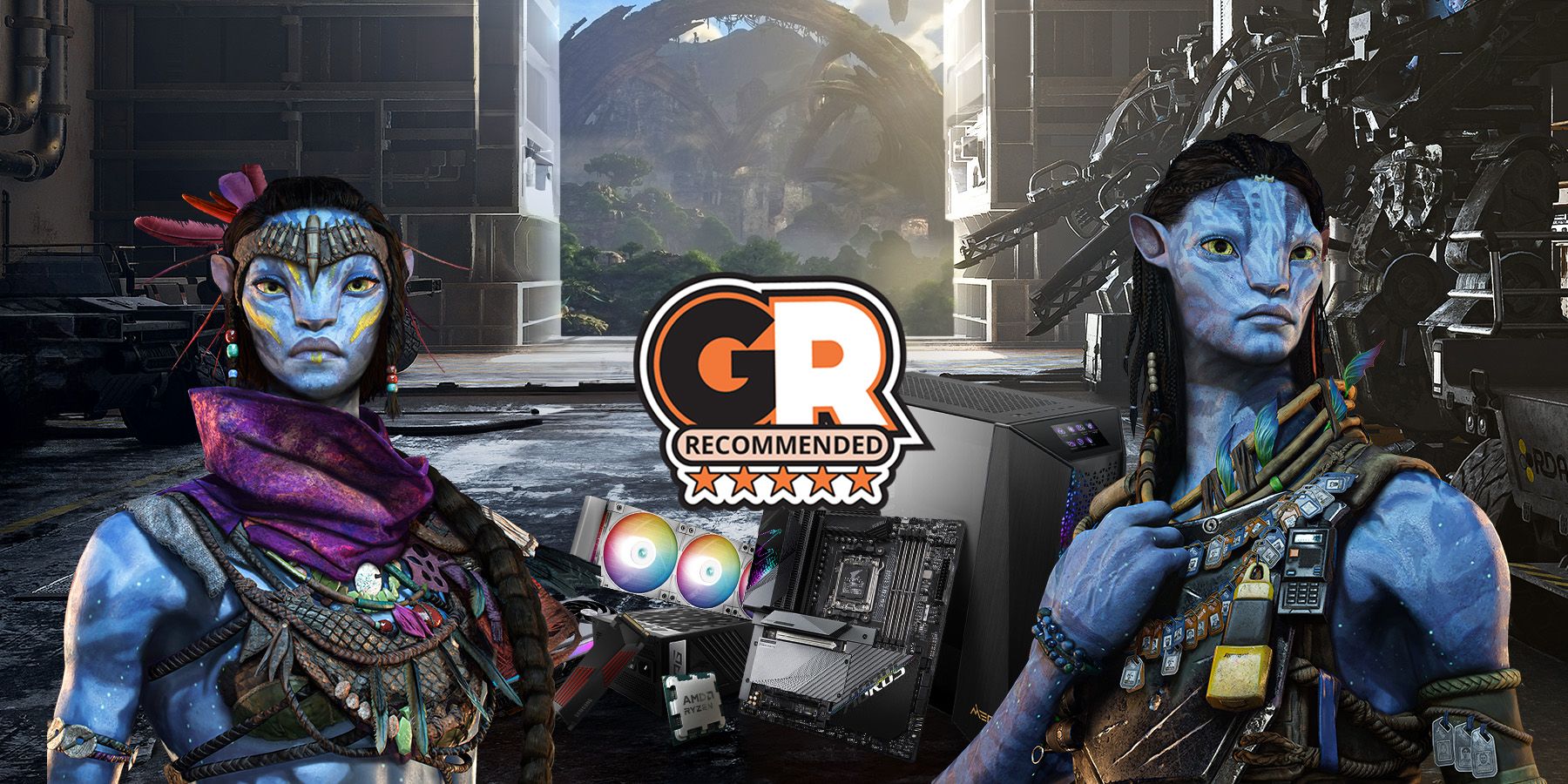
The Best PC Builds For Avatar: Frontiers of Pandora
Avatar: Frontiers of Pandora is one of the most anticipated releases at the end of the year, but can your PC run it without needing an upgrade?
FAQ
Q: What is the latest AMD motherboard chipset?
AMD's 600 series chipsets are the latest. Chipsets start from the budget-oriented B650 and edge towards the performance tier with the X670 while pushing the enthusiast tier with the X670E chipset.
Q: What processors do the B650 or X670/X670E chipset support?
All AM5-based processors to date. While all AMD Ryzen 7000 series processors are supported out of the box currently, Ryzen 7000 X3D series processors might need a BIOS update to function with motherboards that sport older BIOS versions.


